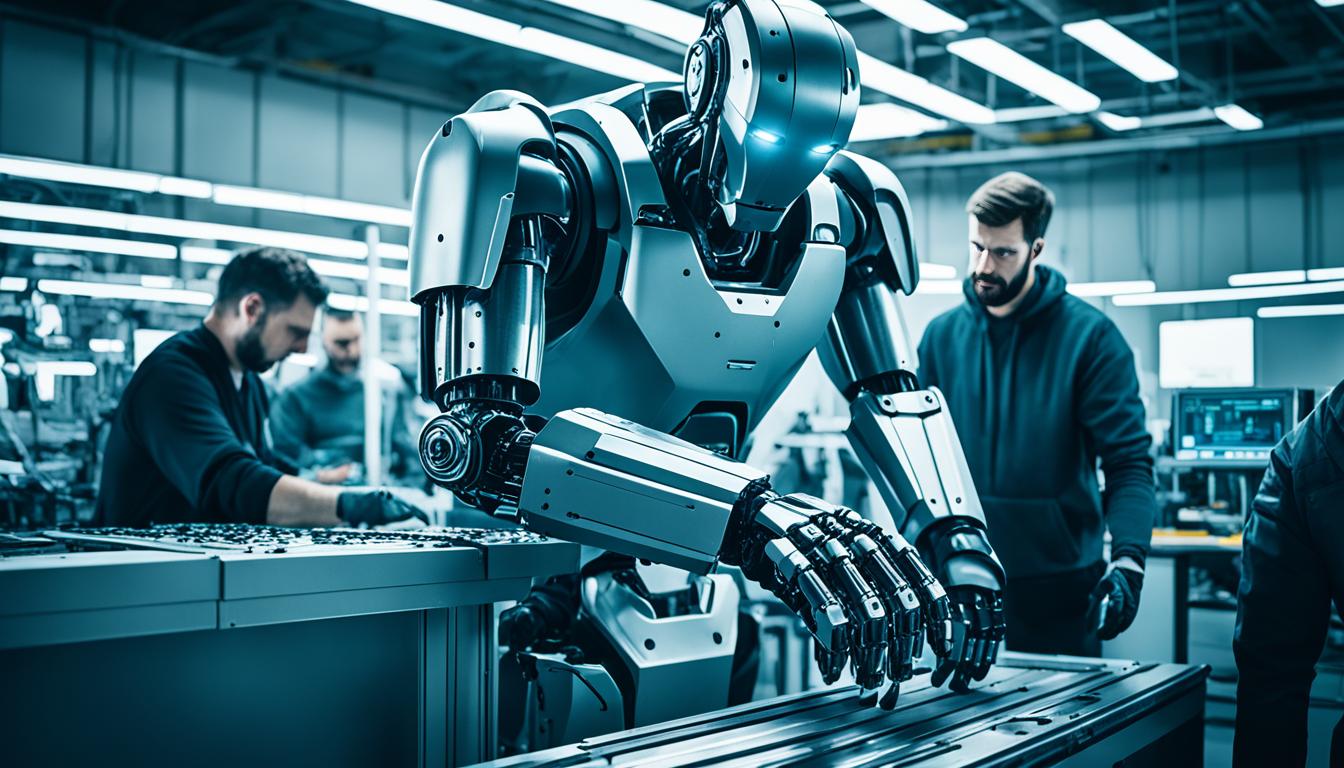Consider how rapidly your professional life evolves. Just a few years ago, the idea of working from home felt like a distant dream. However, with the surge in remote work, you can now kick off your day with a family breakfast and wrap it up with completed projects, all while avoiding the stresses of commuting. The future has officially arrived, thanks to artificial intelligence (AI) taking the lead. As we navigate through this new era, it’s evident that AI is significantly impacting remote work. Not only does it enhance productivity, but it also contributes to a better work-life balance. AI is revolutionizing our work routines by simplifying mundane tasks and allowing us to concentrate on major decisions. This transformation enables you to thrive as the workforce evolves. Discover how this shift positively impacts both your professional endeavors and overall well-being.
Key Takeaways
- AI is reshaping the future of remote work by enhancing productivity and collaboration.
- The integration of AI tools helps streamline daily tasks, allowing more focus on strategic initiatives.
- Remote work is becoming increasingly popular, leading to improved work-life balance.
- AI can assist in real-time decision-making through data analysis and insights.
- The shift towards AI-driven remote work offers employers a broader talent pool while reducing costs.
- AI tools can automate repetitive tasks, resulting in happier, more engaged employees.
- Embracing these changes can prepare you for the evolving demands of the workplace.
The Evolution of Remote Work
The evolution of remote work has changed a lot in recent years. What was once a rare perk is now a common way of working. Initially, many were doubtful. But the COVID-19 pandemic pushed businesses to see the value in remote teams3. Thanks to tech like cloud services and smartphones, working from afar is easier than ever4.
Now, it’s not just tech companies that offer remote work. Many industries value the flexibility and balance it brings4. Employees like working remotely because they get more done and have freedom. Businesses save money and can hire talent from anywhere3. To overcome remote work challenges, companies are creating programs to help workers feel connected and avoid burnout5.
Future prospects for remote work look bright, with AI and VR ready to make it even better. These tools could make workers happier and spark more creativity3. Expect to see more companies going hybrid, where employees choose where they work best4.
Understanding Artificial Intelligence in the Workplace
Artificial intelligence is changing the way we work, making tasks smoother and boosting productivity. It’s interesting to see how AI and remote work are making telecommuting much more efficient6. This technology excels at doing routine tasks automatically. This lets workers focus on more creative tasks6. When it comes to business, AI helps with project management. It makes assigning tasks and tracking progress a lot easier6.
AI tools make virtual meetings better by improving communication6. They also customize work settings to help people get more done6. Moreover, AI-powered platforms offer personal training and skill-building, supporting ongoing professional growth6. In the HR sector, around 40% of functions worldwide now benefit from AI tools7.
AI predicts workloads and suggests the best work schedules to boost efficiency6. However, using AI raises ethical and privacy issues, which need careful handling6. As more teams work virtually, AI helps form strong, well-matched groups by analyzing skills and styles6. Importantly, many see AI as enhancing human skills in remote jobs, not replacing them6.

About 71% of global companies now focus on people analytics. They use it to understand business operations better and tackle personal challenges7. They apply AI to assess verbal and non-verbal signals in job interviews. This aims to make hiring fairer and reduce bias7. As workplace innovation keeps evolving, grasping AI’s effects and uses becomes crucial for everyone involved.
How AI Changing Remote Working is Enhancing Productivity
AI is making a big difference in how we work remotely. It’s making boring tasks easier, so we have more time for the fun stuff. This helps remote work productivity get better in many jobs, especially in customer service and managing projects.
Automation of Mundane Tasks
Thanks to AI, we don’t have to worry about scheduling meetings or sorting our emails anymore. Tools like virtual assistants help us work smarter every day. Plus, around two-thirds of workers in the US could get more done thanks to these helpful AI tools8. Moving away from boring jobs lets teams do more creative work. When customer service teams use AI, they spend a lot less money, up to 24% less9.
Personalized Insights and Recommendations
AI also gives workers advice that’s just for them. It looks at how you work and suggests how to do better. This helps remote teams know what to do next, making work go smoother AI-driven efficiency. Companies using AI might see their profits go up a lot, even by 30% or more10. With AI making meeting notes short and easy, everyone can focus more on working together well9.

| AI Tool Type | Benefits | Examples |
|---|---|---|
| Virtual Assistants | Schedule management and task automation | Microsoft Cortana, Amazon Alexa |
| Project Management Software | Optimize workflows and track progress | Asana, Trello |
| Analytics Platforms | Data analysis and performance insights | Tableau, Power BI |
| Communication Tools | Enhance team collaboration and interaction | Slack, Microsoft Teams |
| AI Co-pilots | Support workflows and reduce costs | Custom AI agents |
AI Tools Boosting Collaboration
AI collaboration tools are changing how remote teams connect and work together. They help break down communication barriers. This creates an environment where everyone can share ideas freely. Tools like AI chatbots offer instant answers to questions. They support real-time work together11.
This improves team work from different places by keeping all members updated and involved. Advanced platforms that use learning algorithms help analyze data for future planning11. These insights guide team leaders in choosing the right team members based on skills and interests12. Big companies use these tools for better coordination and sharing information easily through AI.
AI in project management tools automates scheduling meetings. This saves time for important projects11. It makes teamwork more efficient, letting teams focus on important tasks. AI tools help recommend the best times for meetings, improving work together12.
AI e-learning platforms provide custom learning for remote workers. This helps improve skills and knowledge11. It leads to a better team, increasing productivity overall.

Keeping a safe work environment is crucial. AI in security helps prevent threats, keeping work going smoothly in remote settings11. In the end, using these AI tools is vital for strong and enriching teamwork among remote teams.
The Role of AI in Ensuring Flexibility
As more people work from home, AI technology is key to making work flexible. Many companies now see the value in using AI to help teams work together smoothly. To keep up, it’s important for them to use the right AI tools.
AI-Powered Communication Platforms
AI-driven platforms make talking with remote teams easy. They offer features like automatic replies and smart suggestions to keep conversations on track and fruitful. A study by McKinsey shows about 92 million U.S. workers have options to work flexibly, showing a big move towards using AI for flexible work13.
Virtual Collaboration Solutions
AI-based virtual tools improve how teams work together and manage projects. They use learning algorithms and analyze data in real time. This helps teams manage their work and tasks better.
With AI’s deep analytics, companies can keep their remote teams productive and accountable14. This push towards AI for flexible work is essential. It helps companies meet their employees’ needs, keeping them focused and efficient.

Data-Driven Decision Making in Remote Teams
In today’s world of remote work, using data to make decisions is crucial for success. Companies are now turning to AI analytics to look closely at important data. This helps them make choices quickly and with more knowledge. With AI, hiring becomes quicker and cheaper by finding the best people faster15. It also makes sure the best candidates are chosen fairly, focusing on their skills and how well they fit the job15. Predictive analytics help teams predict which candidates will do well, making hires better overall15.
AI analytics can also make remote teams work better by providing immediate insights into how the team is doing. For example, it looks at how fast tasks are done and how good the work is16. It also checks how happy employees are by gathering their feedback. This makes for a happier team16. By analyzing how much collaboration tools are used, teams can see how these tools help with projects16.
Furthermore, AI can give helpful insights into how well employees perform and feel in remote jobs. It turns things like how often they talk and their work-life balance into useful info17. AI tools can even check that company rules are followed in a remote setting17. By using these analytics, teams can succeed in the long run and use their resources wisely.

| Performance Metric | Description | Benefit |
|---|---|---|
| Task Completion Rate | Percentage of tasks completed on time. | Improves time management. |
| Output Quality | Evaluates quality of work by team members. | Ensures high standards of deliverables. |
| Employee Satisfaction | Assessed through surveys and feedback. | Fosters a positive work environment. |
| Collaboration Tools Usage | Examines use of platforms like Slack or Microsoft Teams. | Enhances team communication. |
| Work-Life Balance | Assesses employees’ ability to manage personal and professional lives. | Promotes worker wellbeing and productivity. |
Upskilling for an AI-Driven Workplace
The workplace is changing fast because of AI. Upskilling for AI has become necessary. Employees need to learn new technologies and be flexible. Companies now see how important continuous learning is, especially with more people working from home. This makes adapting easier and helps build a culture ready for change.
Continuous Learning Opportunities
Platforms like Coursera, edX, and Udemy are great for learning AI skills. They offer classes for all skill levels, helping everyone grow professionally. By making learning easy to get, people can keep up with job changes. Reports show businesses focusing on learning see a big increase in productivity of 6-12%18.
Re-skilling and Up-skilling Necessities
The need to learn new skills is clear as jobs change. About 14% of jobs globally might be lost to automation in 15 to 20 years. At the same time, 32% of jobs will need new skills19. CEOs say 44% of workers need to learn new things to succeed in an AI world20. Companies are starting big programs to teach technical and adaptability skills19.

Challenges of AI Integration in Remote Work
AI integration in remote work presents big hurdles. Especially for organizations aiming to modernize their operations. A central concern is job displacement. Employees fear losing their jobs to new technology. A Gallup poll shows that almost 22% of U.S. workers worry about technology making their jobs irrelevant21. This fear creates remote work obstacles. It slows down the adoption of productive AI technologies.
The skills gap is another big problem. Many remote workers don’t have the training they need to use AI tools effectively. A study by Goldman Sachs suggests that generative AI could affect 300 million full-time jobs globally. It requires workers to adapt quickly21. As organizations try to use AI solutions, they face AI workforce issues. This includes a gap between the skills workers have and the skills needed for AI.
Using AI tools too much can also weaken critical thinking and problem-solving skills. However, skilled workers who use AI technology can perform up to 40% better than those who don’t, showing the importance of balance21. Clear communication is essential to overcome these challenges. Organizations must focus on training programs. This will help their teams adapt to the changes in remote work.

Conclusion
Bringing AI into remote work marks a huge step towards a better future. It’s important to see that the future of working from afar depends on AI. Tools like Asana, Zoom, and Microsoft Teams change how you work together2223. They make your team’s work better than ever.
For companies wanting to succeed, learning all the time is key. AI helps make things easier by handling routine tasks. This lets you do more important work2223. It boosts not just your productivity, but also makes the whole workplace more flexible and quick to adapt.
When you adjust to remote work, being open to new ideas is crucial. Use AI to keep your team ahead in the fast-evolving work world2223. By using AI well, your remote team can stay competitive.









